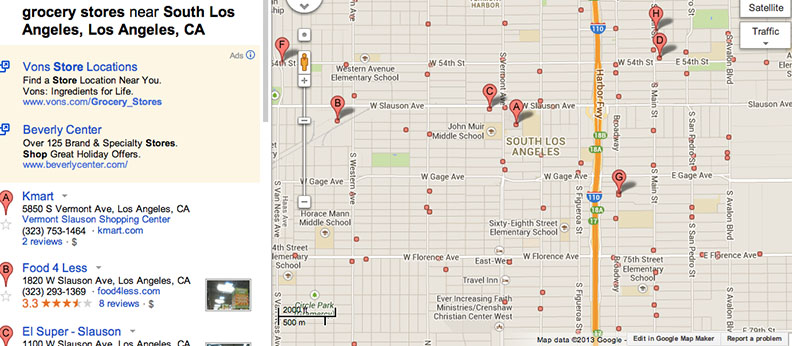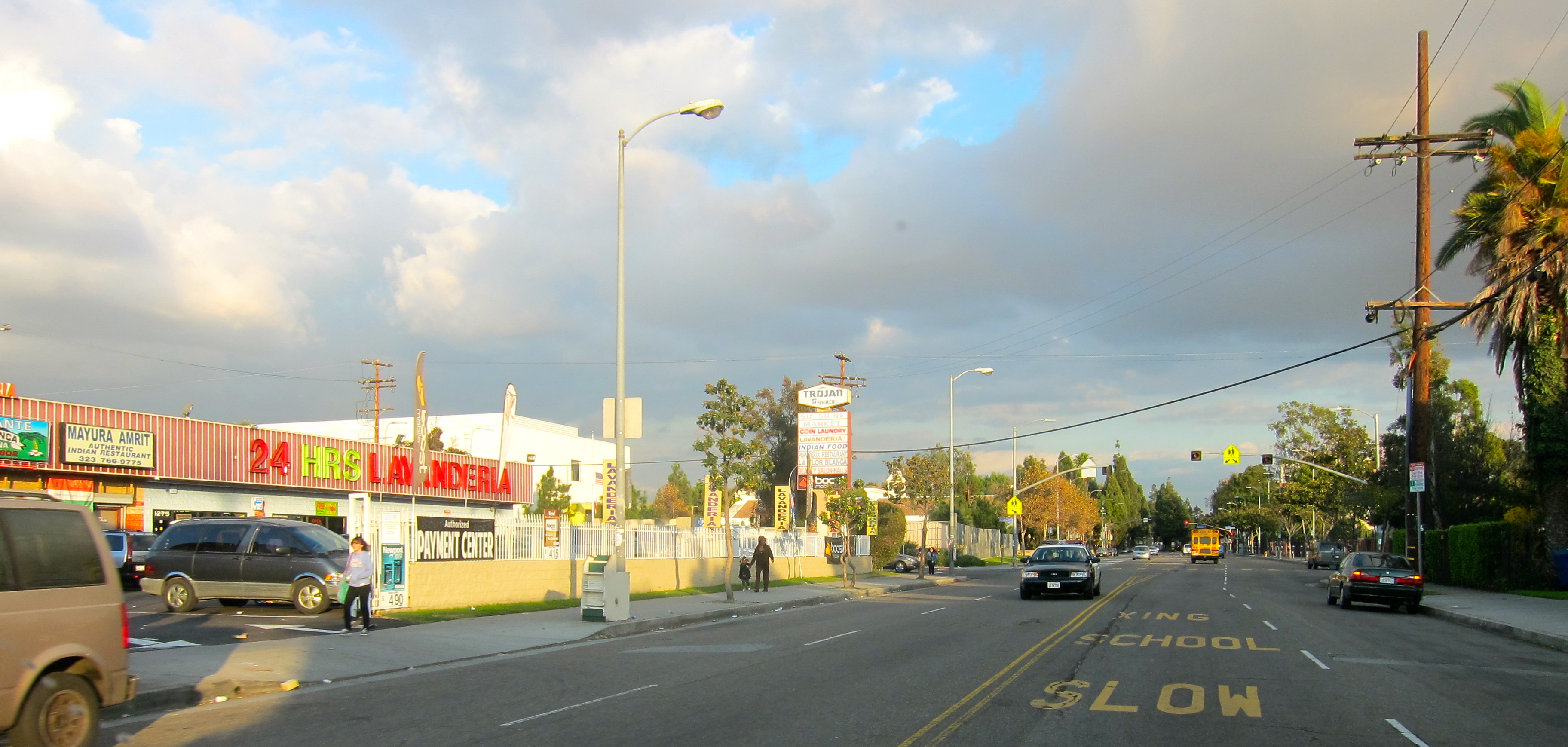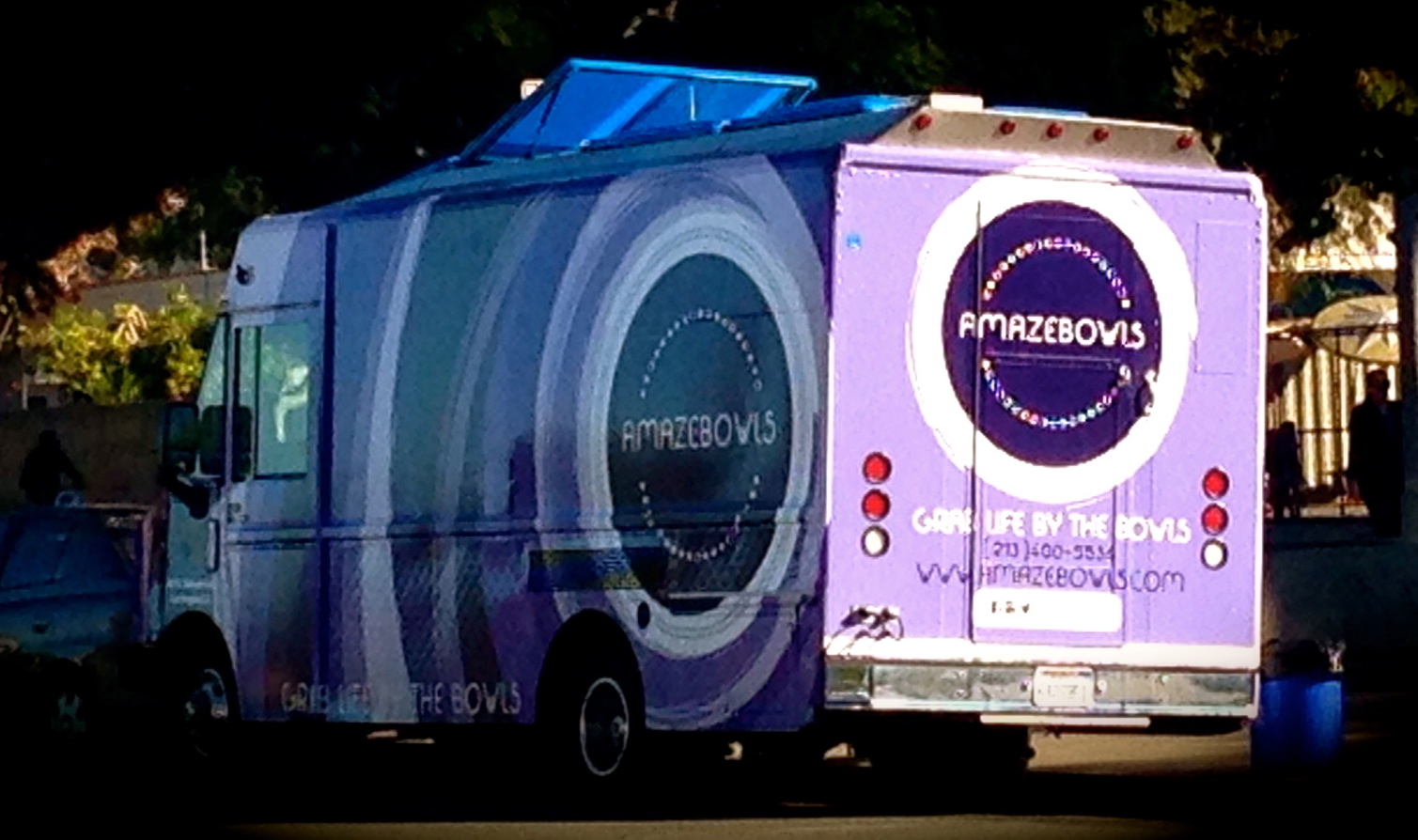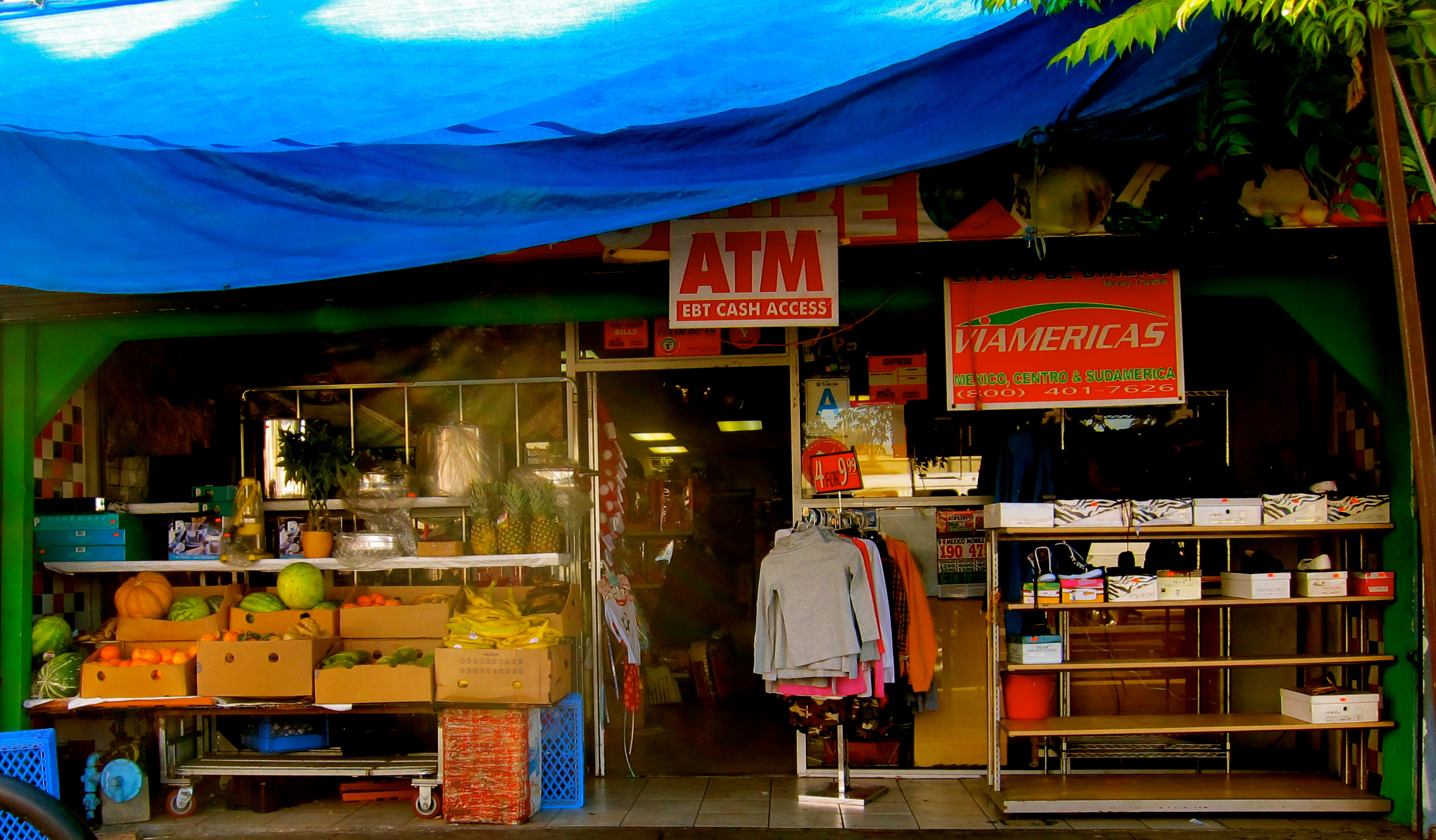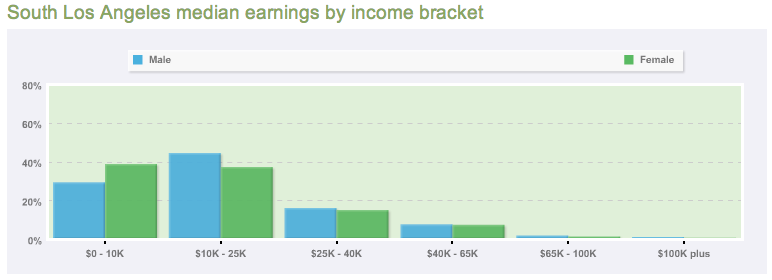
South LA is known as a food desert, meaning healthy, affordable food is difficult for residents to get. (Photo by Stassy Olmos)
By Stassy Olmos
University of Southern California
South Los Angeles has been home to around 750,000 people since 2000, according to the U.S. Census. Of that 750,000, more than 33 percent of adults are obese, according to the LA County Department of Public Health.
What could be causing this?
According to AreaVibes, the poverty level is 34.3 percent in South Los Angeles compared to 22.1 percent in all of Los Angeles County. The poverty rate is over 55% greater than LA’s rate.View full South LA statistics at the AreaVibes website.
“South LA’s food environment is characterized by the absence of supermarkets and the over-saturation of fast food restaurants,” said Jamillah Jordan of UCLA in her comprehensive project. To read more about Jordan’s findings regarding South LA’s Supermarkets, click here.
About 70 percent of the restaurants in South L.A. are fast food restaurants, according to the Community Health Councils.
“South LA is known as what’s called a food-desert,” said Camille Dieterle, a health and wellness expert at USC. A food desert is an area where healthy food is difficult to obtain at an affordable cost.
According to “The Links Between the Neighborhood Food Environment and Childhood Nutrition” by the Robert Wood Johnson Foundation, stores in lower-income neighborhoods are much less likely to carry important food items for living a healthier life than in wealthier neighborhoods. In addition, the quality and variety of fresh fruits and vegetables in these stores is a lot less.
So what’s happening?
“There’s tons of research that shows that people with a lower socioeconomic status have an increased risk for mental health diseases, for obesity, for diabetes, for heart disease, hypertension…—basically all chronic illnesses,” said Dieterle.
When referring to South LA in particular Dieterle said, “They’re at greater risk for all those chronic health diseases because it’s considered a lower SES neighborhood.”
What’s being done?
“I know that there are different organizations that are working on this issue,” said Dieterle.
Community Services Unlimited is one of these many organizations. They are a 501c3 nonprofit in Los Angeles trying to create a healthy and sustainable life for residents.
Ruth Cardoba works at CSU and says the very little organic food in South LA markets is not affordable for the community.
“As an organization, we have three farms here in South LA and so we harvest, we cultivate our gardens, and we sell out to the community,” said Cardoba, “We also work with small farmers within the county.”
The CSU vision statement says, “We envision equitable, healthful and sustainable communities that are self-reliant, inter-relating and where every individual has the support and resources needed to develop to their fullest capacity.”
CSU hosts numerous programs within Los Angeles to carry out this vision. You can learn more about them and their programs at their website.
Not only are organizations making a difference, but local students are as well.
According to AreaVibes, there are 71 schools for education up until 12th grade and three post-secondary schools in South LA. That’s a lot of adolescents with little access to healthy, affordable food. Some students who attended college in South LA used their education to create change.
Bryan Leong graduated from Marshall School of Business less than a year ago and he and his friends have already started a healthy food truck called Amazebowls.
“We wanted to provide a healthy alternative that was very affordable. We realized that a lot of other healthy options in the whole of LA seem to be very expensive, so we tried to come up with some smoothies and an açaí bowl that is really healthy and reasonably priced so that we can help improve peoples’ lives,” said Leong.
“Everywhere around here is fast food,” said Leong, “If you don’t have a car it’s really hard to travel out and get healthy foods.”
Amazebowls can be found traveling in South LA as well as Santa Monica, Culver City, and West LA. Follow them on Twitter to see if they’ll be near you!
In the words of one South LA resident, DeQuan Everett, “Los Angeles is all about good food, I don’t see why there shouldn’t be equal opportunity for neighborhoods to get healthy food.”
